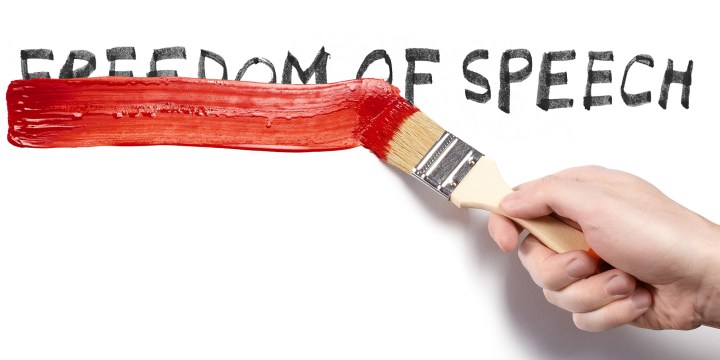Op-Ed
Film and Publications Amendment Act: Protecting, not censoring, our citizens in the digital age

The Film and Publications Amendment Act is not a step towards censorship – in a democratic South Africa we do not ban content unless the content is unlawful and damages social cohesion in the country – in other words, hate speech, incitement of violence, propaganda for war, child pornography, and so on.
Human beings are innately wired for progress. It is in our evolutionary DNA. History has shown that, often, much is sacrificed in the name of advancement.
At the start of the Second Industrial Revolution, few would have predicted that the burning of fossil fuels would have such deleterious effects on our environment. Through lobbying the global world, via policy summits, 13,000 scientists explicitly called for “bold and drastic transformations” inclusive of economic and population policies. These policies led to legislative change, resulting in enormous positive effects that just may save the world we live in.
Enter the digital revolution with its interesting dynamic, pitting the hard-won right to freedom of speech against the imperative for social cohesion and the protection of personal dignity – the age-old debate in democratic nations around balancing rights and responsibilities.
The penetration of new technologies and the reliance on digital forms of information and entertainment in South Africa is undeniable. In the first quarter of 2020, daily newspaper circulation declined by 14% over the previous year, with weekend newspapers declining by 17%, according to the Audit Bureau of Circulation of South Africa. At the same time, according to statistics from the DataReportal, mobile connections in South Africa increased by 3.1 million between January 2019 and January 2020, to 103.5 million. Internet penetration stood at 62% (an increase of 3.1% year-on-year) and social media penetration at 37% (an increase of 19% year-on-year).
This trend is not new, as media convergence sees consumers opting to access their news, information and entertainment online. At the same time, a significant power shift has occurred. The gatekeeper role of curated information, once held by traditional media, is starting to dissolve with ordinary citizens being able to share their opinions far and wide using social media.
Enter a whole new debate: fact versus fake news. A certain high-powered state leader on Twitter being a prominent case in point.
In South Africa, a strong Constitution has won global acclaim for its ability to balance rights and responsibilities. Our legislation and regulations take their tenor from this solid basis. The Films and Publications Amendment Act of 2019 (FPAA) is no different, recognising that no right can be absolute insofar as it holds the potential to infringe on a contrasting right.
In simple terms, as an example, the freedom of one citizen to express their opinions online has, in the past, come into direct conflict with the rights of fellow citizens when these opinions constitute hate speech. The right of a child to not be exposed prematurely to content of an adult nature comes up against uncontrolled posting of sexually explicit images on mobile applications.
The FPAA activates a system of consumer advisories, employed to provide the public with advance knowledge of the types of content they are likely to encounter in a film or game.
This balancing act between rights and responsibilities is by no means a simple equation, due in part to the diverse and nuanced nature of human existence. In recent weeks, a draft set of regulations developed to align with the Films and Publications Amendment Act of 2019 has been published for public and industry inputs, after the Amendment Act was assented to by the president in September 2019. The Amendment Act and the regulations, once finalised, will come into operation simultaneously.
So, in the wake of this new and improved legislation designed to protect us and our children, articles and social media posts proliferate that misrepresent its intention and its consumer protection elements, which go to the heart of the Film and Publications Amendment Act.
Fact or myth: The Films and Publications Amendment Act (FPAA) and draft regulations
The intent of the Act has always been to ensure that citizens of South Africa are protected from content in films, games and certain publications that could cause them moral, emotional or psychological harm. Precepts of the act, and the regulations that implement them, create that fine balancing act between the rights and responsibilities of citizens. The Amendment Act brings the law in line with advancements in digital technologies to protect against harmful content online.
Censorship versus classification
Often accused of being a law that seeks to censor, this misunderstanding stems from opponents not taking into consideration the mechanism by which content is mediated. It completely overlooks the fact that in a democratic South Africa we do not ban content, unless the content is unlawful and damages social cohesion in the country (i.e. hate speech, incitement of imminent violence, propaganda for war, child pornography, etc). This unlawful content is set out in the Constitution, to which the FPAA is aligned.
Instead, the FPAA activates a system of consumer advisories, employed to provide the public with advance knowledge of the types of content they are likely to encounter in a film or game. The content is not banned or censored unless it contains illegal content – it is, rather, allocated a consumer advisory prior to distribution. This is a very important and fundamental distinction.
The process of the classification of content is informed by Classification Guidelines which are used to assign ratings and classifiable elements to every film and game prior to their distribution in the country. Using this consumer advisory as a guide, the public chooses what content they or their children expose themselves to. These Classification Guidelines are subjected to a substantive review and to public scrutiny every five years to ensure alignment to new laws and new child development theories, so that they correspond with social values and the best interest of citizens.
An age rating, for example, alerts a parent that the content might cause developmental, emotional or psychological harm to their children under that age. An “SV” element on the other hand warns survivors of sexual violence – that the content may contain portrayals of sexual violence and might thus trigger their previous trauma. A “P” element assigned would warn about prejudicial themes against a certain religious, racial or interest group. This is a somewhat oversimplification, as the Classification Guidelines take into consideration the artistic or pedagogical intent of the creator and the impact of the format in which the content is distributed (e… cinema or DVD).
Films and games, which are distributed by a person who conducts the business of such, are classified before legal distribution can take place. The FPAA allows the public to lay a complaint against, or object to, any publication (except for newspapers, magazines and broadcast content which is exempt regardless) such as a book or piece of art. This content is then assigned a classification retrospectively.
The FPAA affirms that commercial digital content, distributed on online platforms such as Over-The-Top (OTT) and Video on Demand (VOD) falls into the ambit of its pre-classification for legal distribution.
Commercial digital content vs social media
Another common misperception is that the FPAA seeks to control social media content. While the content shared on social media does potentially contain content that can cause harm, the FPAA does not in fact relate to social media generally. It does, however, make inroads into protecting the public from specific types of social media content that directly harms the dignity of a citizen. This content is referred to in the FPAA as revenge pornography and aims to provide recourse for survivors of cyber bullying perpetrated online, when intimate images are shared without the consent of the person depicted in the content.
The chicken-and-egg debate about South Africa’s high rate of violence vis-à-vis the type of content we consume illustrates the question of impact of content consumption on the population.
Prior to the FPAA being signed by the president, a distributor of physical content (i.e. cinema-style exhibitions, DVD or CD) needed to ensure that the content is assigned an age rating and element classification before it is distributed.
Mechanisms are now being put in place through the FPAA draft regulations to provide greater clarity and direction on how content that is distributed online for commercial gain is classified. This gives the public the option to consume content or not, based on the consumer advisory that is assigned to the online content.
This amendment to the law now places it beyond doubt that viewers of online commercial films and games will be protected through consumer advisories in the same way that they have been protected from content distributed through traditional methods previously. The onus is placed on the distributor of such online content to ensure that a classification rating is assigned and displayed when content is viewed.
Importantly, this excludes content that is not shared for commercial gain online and on social media platforms.
The nature of online distribution channels is vastly different from traditional distribution channels: the FPB is consulting stakeholders from the creative and distribution industry to simplify the process of classifying commercial online content. This includes the possibility for these online service providers to self-classify, based on the South African classification system, or apply for the accreditation of a recognised and aligned international classification system that industry has been trained to use.
After three weeks of interaction with industry in this regard, the majority of our creative sector has welcomed the robust and sincere dialogue with the FPB on the draft regulations to implement the FPAA in the interest of protecting the public while easing the administrative burden on distributors.
Better safe than sorry
These are some of the misunderstandings of the FPAA clarified.
Reflecting on other advancements in humanity’s relentless quest for progress that have resulted in both positive and disastrous impacts on society, proactively trying to counter such negative effects makes good sense.
The chicken-and-egg debate about South Africa’s high rate of violence vis-à-vis the type of content we consume illustrates the question of impact of content consumption on the population.
Does our content reflect our social values and mores, or does immersing our children in such content ramp up the normalisation of violent actions? Equally, we see the devastation to personal dignity caused as a result of various forms of cyberbullying, such as revenge pornography, and in its most extreme form – suicide.
Should we as a nation rather be safe than sorry? DM
Lynette Kamineth is the Communications and Public Education Manager at the Film and Publication Board, the content regulator and agency of the Department of Communications. She uses her expertise to highlight the work being done by the organisation to protect the children of South Africa from exposure to potentially harmful content.
Laurie Less is the Shared Services executive at the Film and Publication Board. She was previously the Executive Manager at Wits University Clear-AA, a specialist M&E centre and in various government agencies. In the development sector she worked as a senior programme manager for both Swedish SIDA and the Open Society Foundation of South Africa.
Pandelis Gregoriou is Manager of Legal and Regulatory Affairs at the Film and Publication Board. An attorney of the High Court of South Africa, he obtained a BA and LLB degrees from Wits University. He has worked at the South African Human Rights Commission as its Head of Legal Services, leading the execution of the protection mandate of the institution.


















 Become an Insider
Become an Insider